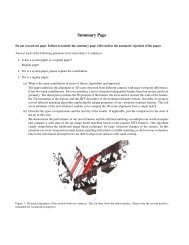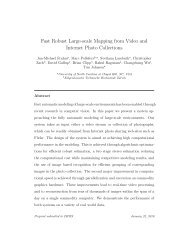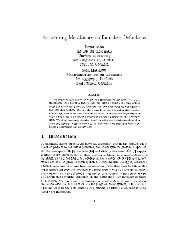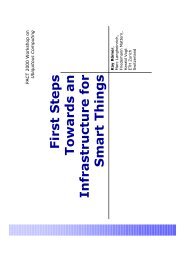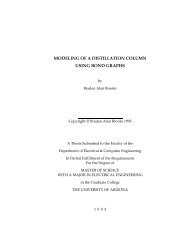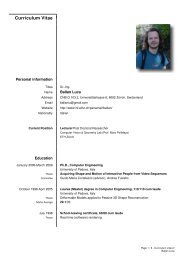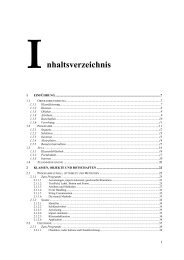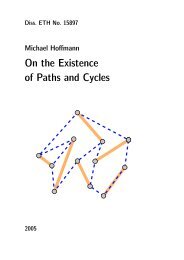A CIL Tutorial - Department of Computer Science - ETH Zürich
A CIL Tutorial - Department of Computer Science - ETH Zürich
A CIL Tutorial - Department of Computer Science - ETH Zürich
Create successful ePaper yourself
Turn your PDF publications into a flip-book with our unique Google optimized e-Paper software.
CHAPTER 13. WHOLE-PROGRAM ANALYSIS 113<br />
foo<br />
main<br />
bar<br />
Figure 13.1: The call-graph for tut13a.c and tut13b.c<br />
13.3 Exercises<br />
1. Extend <strong>CIL</strong>'s call-graph analysis to correctly handle function pointers by using the Ptranal<br />
module dened in cil/src/ext/pta/ptranal.ml. Note the function Ptranal.resolve funptr.<br />
13.4 Further Reading<br />
The Capriccio [?] project uses a whole-program call-graph analysis to estimate the amount <strong>of</strong> stack<br />
space needed by threads in C programs. Then, in server programs that use multithreading to hide<br />
IO latency, lightweight user-level threads can be used to concurrently process a massive number<br />
<strong>of</strong> incoming client requests. The threads can be very lightweight thanks to the call-graph analysis<br />
putting an upper bound on the amount <strong>of</strong> stack space required.



